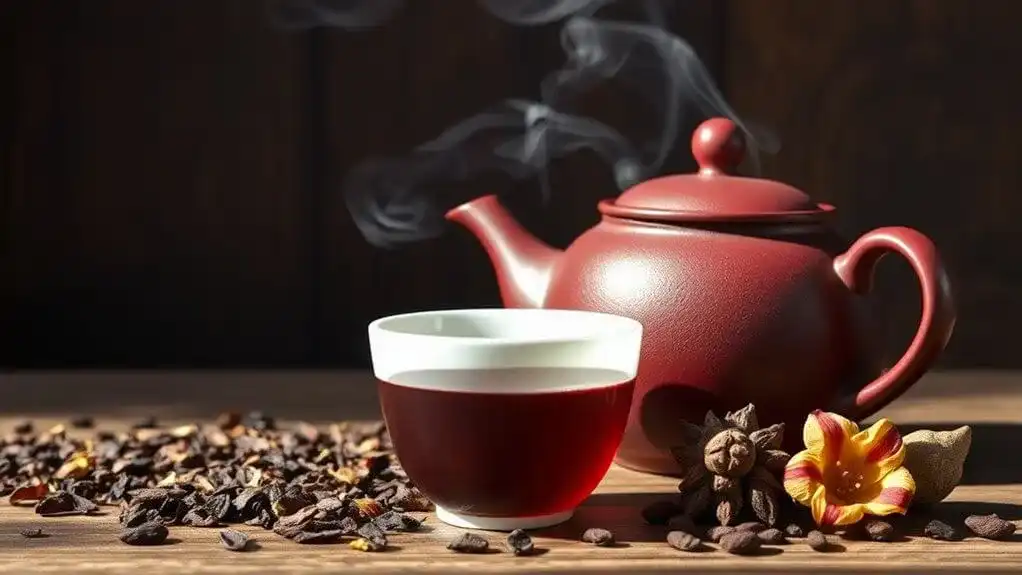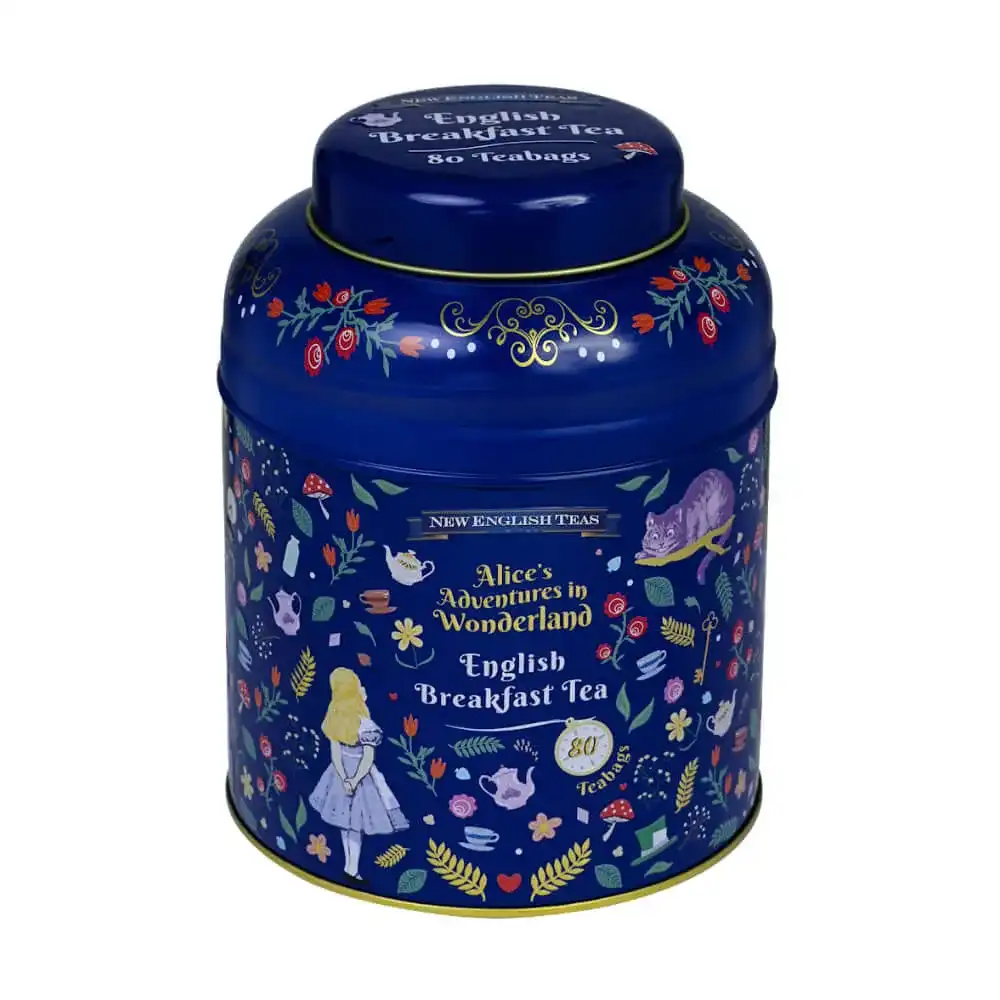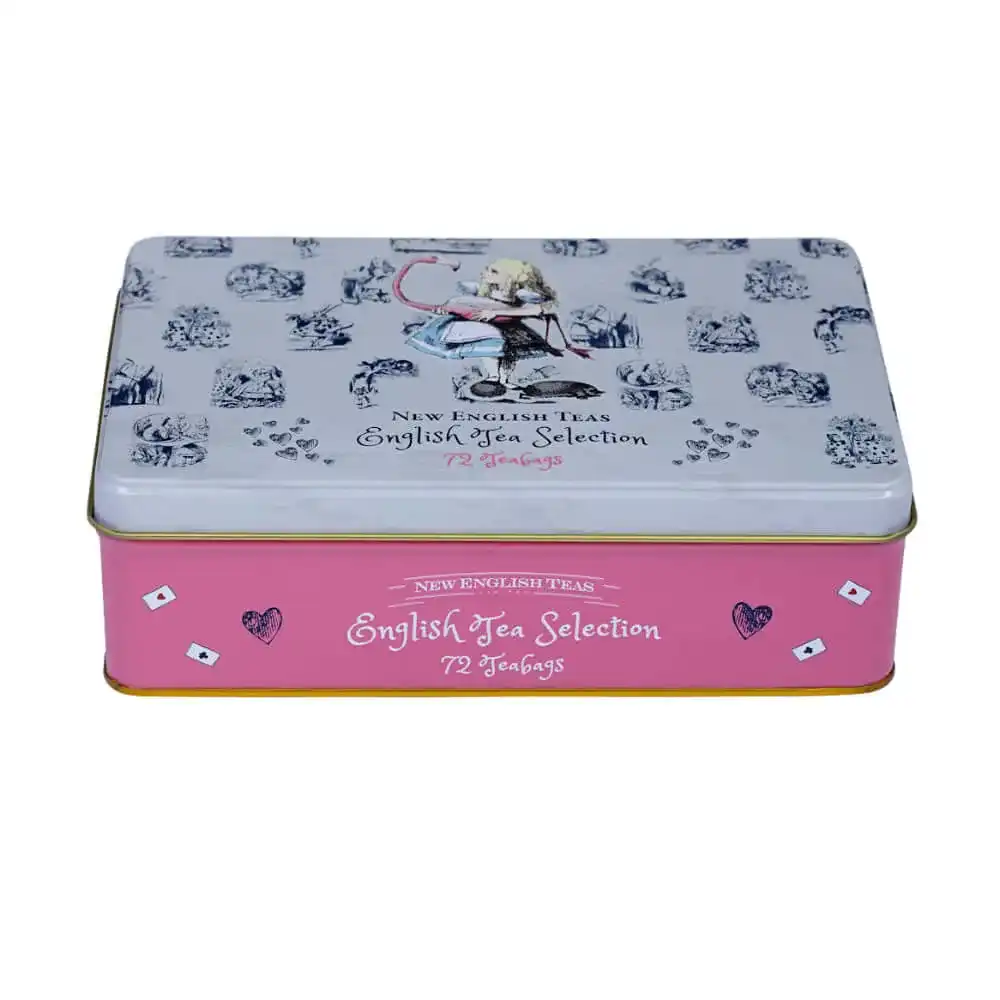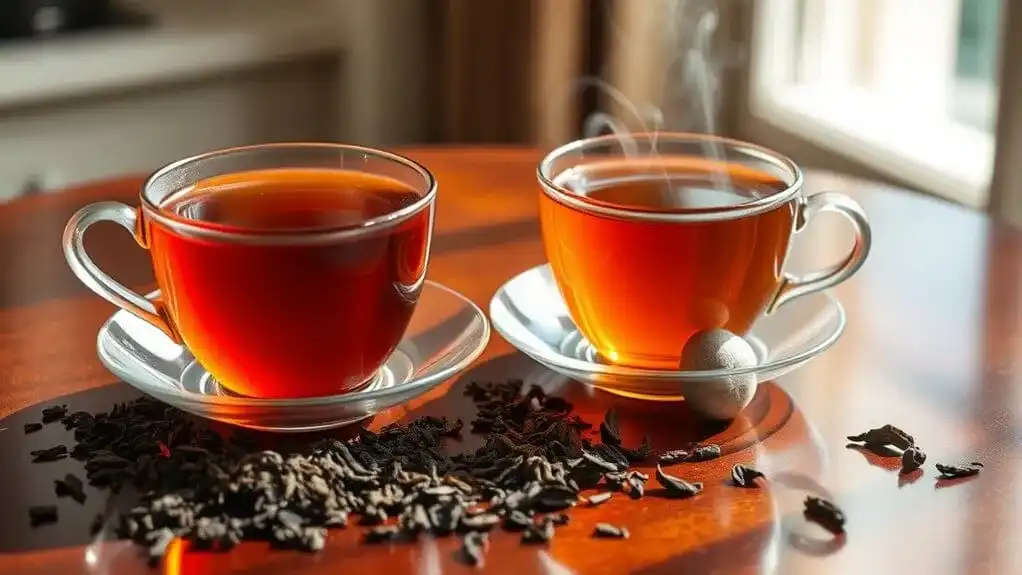Keemun black tea, created in 1875 in China's Anhui Province, stands as the country's most celebrated black tea variety. Its complex flavor profile features distinctive malty notes alongside hints of chocolate, wine, and subtle floral undertones. The tea's unique character comes from carefully selected leaves grown in Qimen County's mountainous terrain and a meticulous production process. The story behind this royal favorite reveals why tea connoisseurs worldwide consider it their cup of choice.
Key Points
- Keemun tea exhibits a complex flavor profile featuring malty undertones complemented by toasty, smoky, floral, and cocoa notes.
- The unique terroir of Qimen County produces smaller tea leaves that develop distinctive malty characteristics during processing.
- Traditional processing methods, including natural withering and controlled fermentation, contribute to Keemun's signature malty taste.
- Proper brewing at 90-95°C helps extract the full malty flavor profile that made Keemun famous internationally.
- First produced in 1875, Keemun's malty characteristics quickly gained recognition from British tea merchants and royalty.
A Journey Through Keemun's Rich History
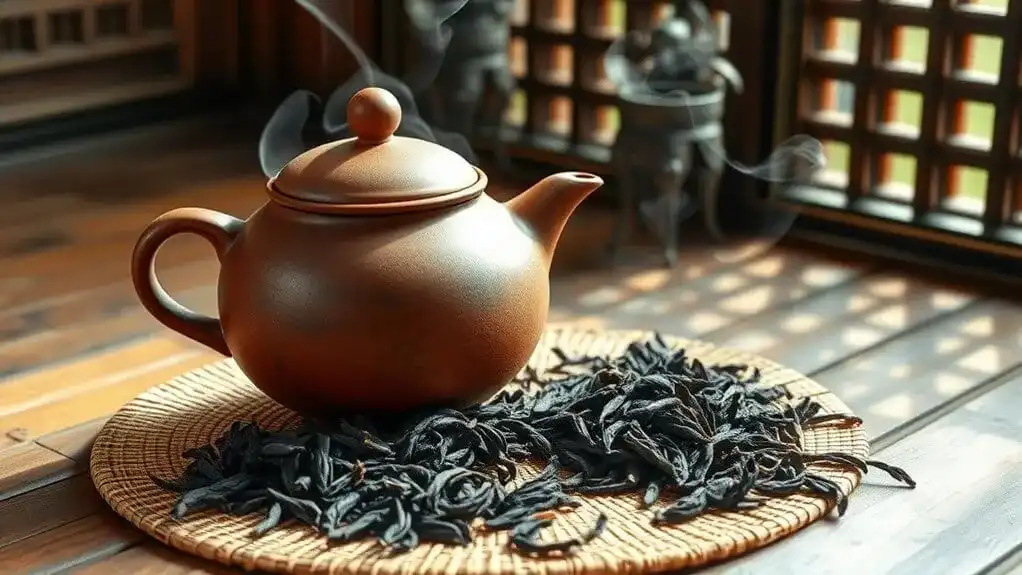
While many of China's famous teas trace their origins back centuries, Keemun's story began relatively recently in 1875 when a former civil servant established the first production in Qimen County, Anhui Province. After failing his civil service career, he journeyed to Fujian to master black tea production techniques, then returned home to create what would become China's most celebrated black tea. Upon his return, he established three tea factories to begin production. The region's unique location between the Yangtze and Yellow Mountains provided ideal growing conditions for this exceptional tea. The tea leaves used are harvested exclusively from the local Zhuye variety trees.
Keemun's heritage quickly flourished as the tea gained international acclaim. Its distinct character and exceptional quality earned it the Gold Prize at the 1915 International Exposition in Panama. British tea merchants particularly embraced Keemun, incorporating it into their prestigious English Breakfast blends. The tea even caught the attention of royalty, with Queen Elizabeth significantly including Imperial Keemun Mao Feng among her preferred teas.
Understanding Keemun's Distinctive Character

A symphony of complex flavors defines Keemun's distinctive character, making it one of China's most sought-after black teas. Its flavor complexity ranges from toasty and smoky notes to delicate floral hints reminiscent of orchids, while subtle undertones of cocoa and burgundy wine create an intricate taste experience. The tea's moderate caffeine content provides a gentle energy boost without the jitters associated with stronger teas. As a key component in English Breakfast blends, Keemun brings its bittersweet chocolate notes to these popular tea mixtures.
The tea's unique qualities stem from its exclusive tea terroir in Qimen County, Anhui Province, where carefully cultivated Camellia sinensis var. sinensis plants produce smaller leaves than their Indian counterparts. The meticulous processing method, pioneered by Yu Ganchen in the late 1800s, involves withering, rolling, oxidizing, and firing the leaves to achieve Keemun's signature amber-red liquor and moderate astringency. This artful production results in a smooth, mellow cup that's both sophisticated and versatile enough to complement various foods or stand alone. The tea leaves are traditionally withered on bamboo mats to begin the careful oxidation process that creates its characteristic flavor profile.
The Art of Brewing Perfect Keemun Tea
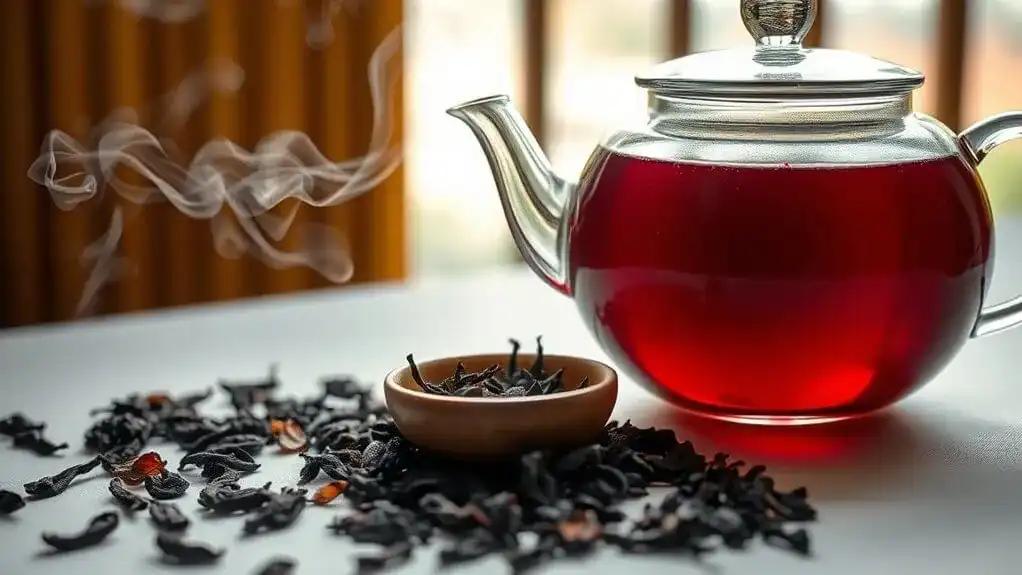
Creating the perfect cup of Keemun tea requires careful attention to both temperature and timing. The ideal brewing temperature ranges from 90°C to 95°C, with fresh, filtered water essential for preserving the tea's distinctive character. Traditional brewing techniques recommend using 2-3 grams of tea leaves per 6-8 ounces of water. The resulting brew develops a reddish brown color characteristic of premium Keemun tea. Known for its elegance, Keemun produces a mellow taste that sets it apart from other black teas.
Whether following the Western or GongFu method, proper preparation starts with pre-heating the teapot. The GongFu style uses a 1:50 tea-to-water ratio and requires just one minute of steeping, while Western brewing extends to 3-5 minutes. Keemun's slender leaves unfurl to produce a brilliant red liquor with sweet, floral notes. Water quality plays an important role in extracting the tea's famous "Keemun Scent," and careful monitoring prevents over-steeping, which can lead to unwanted bitterness. For the most authentic experience, tea enthusiasts prefer using purple clay teaware when brewing in the GongFu style.
Health Benefits Behind Every Sip
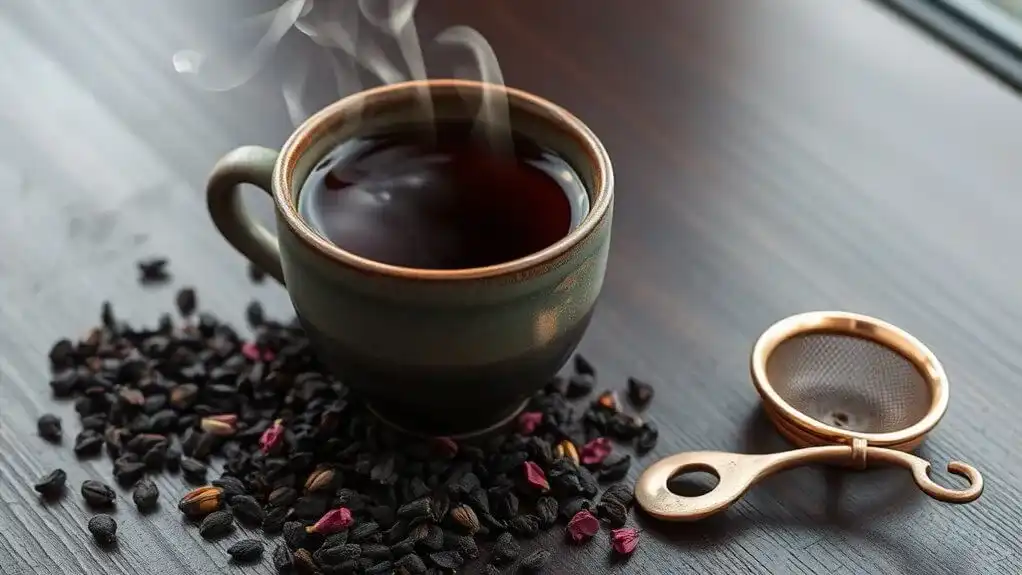
Beyond its exquisite taste, Keemun tea offers an impressive array of health benefits backed by scientific research. Studies reveal its potent antioxidant properties help protect cells from damage while boosting immune function. Regular consumption can reduce the risk of cardiovascular disease by up to 50% when drinking three cups daily.
The tea's polyphenols and catechins work together to provide multiple advantages, from promoting digestive health to offering anti-aging effects. Its unique composition helps remove excess body heat through liver stimulation. It's particularly effective in reducing inflammation, controlling blood sugar levels, and supporting dental health. What's more, Keemun tea aids in weight management and helps combat fatigue through its natural caffeine content. The tea contains less caffeine content compared to Indian Assam varieties, making it an excellent choice for those seeking a gentler energy boost. Research also suggests it may have anti-cancer properties and provide protection against radiation, making it a powerful addition to a healthy lifestyle. The rich concentration of tea polyphenols, which make up 15-30% of dry weight, contributes significantly to its therapeutic properties.
From Leaf to Cup: The Production Process
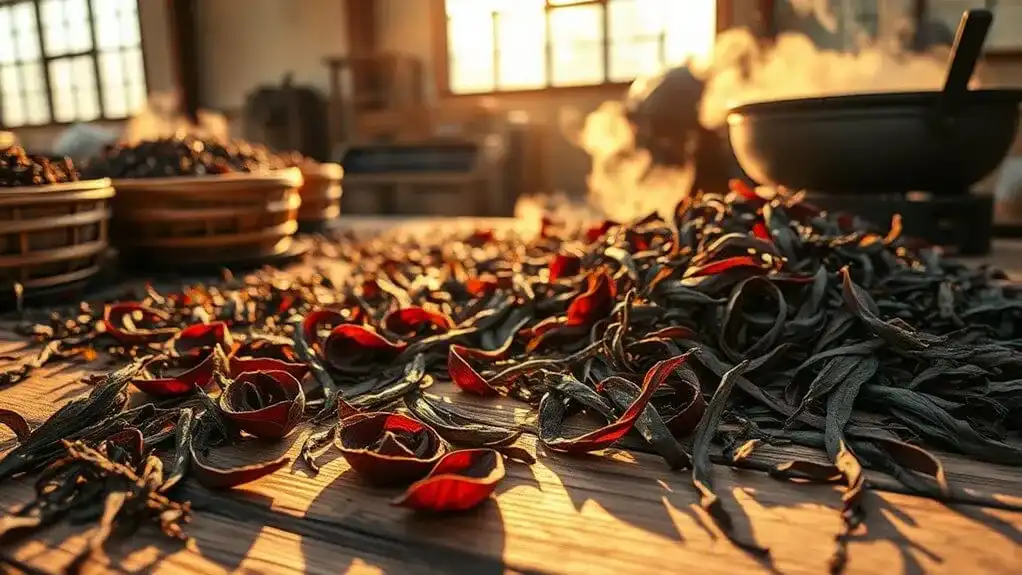
The production of Keemun tea follows a meticulous process that begins in China's Qimen County, where expert tea masters carefully select young buds and leaves during spring and summer harvests. The premium leaf selection focuses on the youngest growth, typically including two to three leaves with buds. This artisanal process was first developed by Yu Gancheng in 1875. The tea gardens' location in mountainous areas with abundant rainfall creates ideal growing conditions for premium leaves.
After harvest, leaves undergo natural withering on bamboo mats at 28-30°C, followed by freezing cycles at -15 to -20°C. The fermentation techniques involve adding polyphenol oxidase while maintaining temperatures between 30-40°C. Spring teas ferment for 3-5 hours, while summer varieties require 2-3 hours until achieving a yellowish-red color and distinct floral aroma.
The final stages include shaping the leaves through tying and rubbing, using stillingia oil to prevent sticking, before drying at controlled temperatures to guarantee perfect moisture levels.
Notable Keemun Varieties and Their Unique Traits
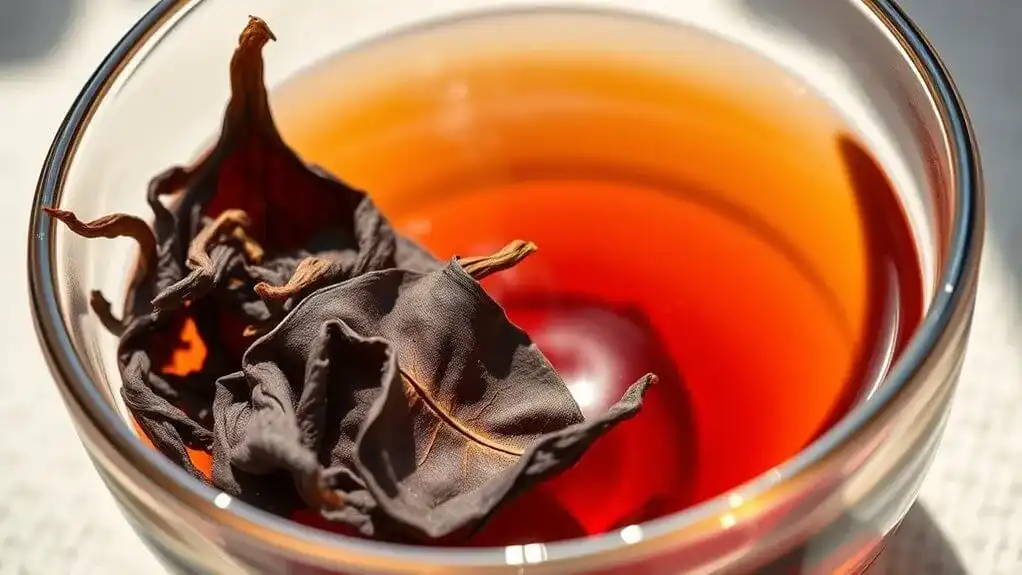
Connoisseurs of fine tea recognize four primary varieties of Keemun black tea, each with distinctive characteristics that set them apart. The early-harvested Keemun Mao Feng offers a silky texture with cocoa notes, while Keemun Hao Ya, available in A and B grades, presents complex floral and chocolate hints, making it an excellent breakfast tea choice. These exceptional teas are known for their honey-like aroma that develops during careful processing. Queen Elizabeth's annual birthday celebration traditionally features royal Keemun service as a cherished part of the festivities.
Keemun Gongfu, specially crafted for traditional Chinese ceremonies, features tightly rolled leaves that unfurl dramatically in hot water, delivering a lively yet smooth flavor profile. The most delicate of the Keemun varieties is Xin Ya, harvested very early and composed primarily of buds. Its lower tannin content creates a gentler cup with subtle floral undertones, perfect for those who prefer their black tea on the lighter side. All of these exceptional varieties can be properly enjoyed by steeping in rolling boil water to extract their full flavor potential.
Discovering Keemun's Place in Modern Tea Culture
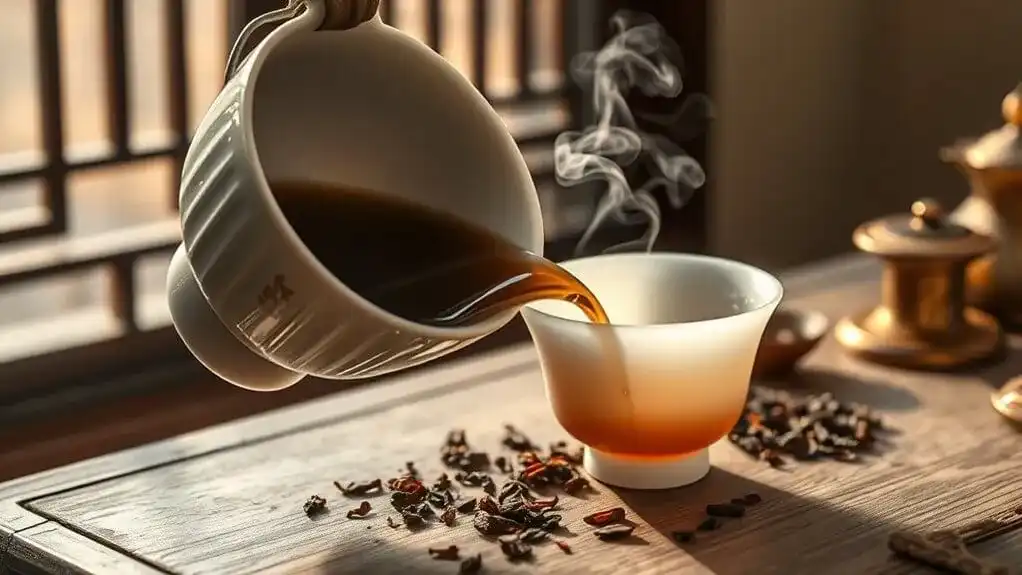
While traditional Chinese tea culture has deep historical roots, Keemun's influence continues to shape modern tea consumption patterns worldwide. The tea's growing popularity is evident in its annual output growth of 7%, though production remains relatively limited compared to other black teas. This scarcity has led to authenticity concerns, as some producers create substandard alternatives to meet demand. Originally created in Qimen County, Anhui, this renowned tea set new standards for Chinese black tea production when it was first developed in 1875.
Modern Keemun trends reflect consumers' appreciation for its complex flavor profile, with stone fruit and floral notes making it ideal for various Keemun pairings. In the US market, where black tea dominates 85% of consumption, Keemun's gentle, malty character appeals to those seeking sophisticated alternatives. Scientific analysis now helps verify authentic Keemun, protecting its reputation and ensuring consumers experience its true characteristics.
Conclusion
Like a master conductor leading a symphony, Keemun black tea continues to orchestrate a perfect harmony of malty richness and delicate complexity in every cup. It's earned its place as China's most celebrated black tea through centuries of refinement and tradition. Today's tea enthusiasts can't ignore Keemun's enduring legacy, as it bridges ancient artisanal methods with modern appreciation for premium tea experiences.
